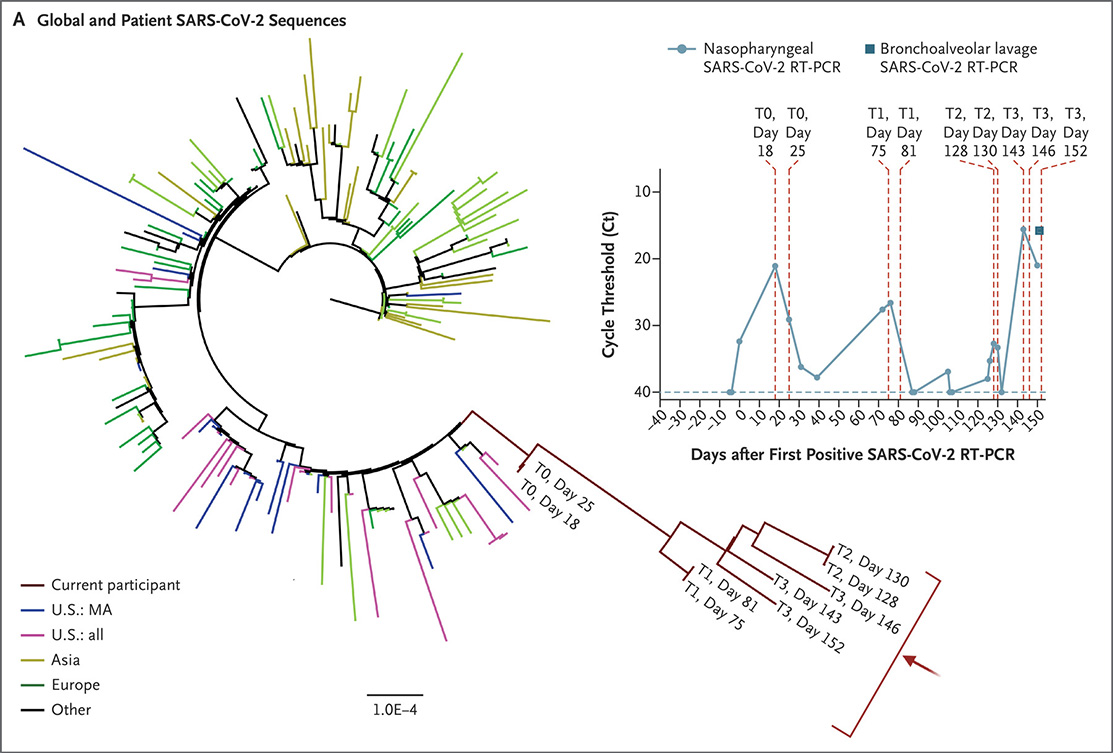tldr: both, but for now everything is in our hands
Translated from a blog post by Derek Lowe, PhD in Organic Chemistry, Pharmaceutical Development Specialist, Columnist for the Royal Society of Chemistry, Chemistry World .
Cover picture: SARS-CoV-2 phylogenetic tree of genomes, circles indicate samples of the last two months, colors indicate different clades. Source: nextstrain.org
Headlines about all sorts of COVID-19 options have been proliferating lately. Some of these materials are simple reports about what is happening ("there is a variant of such and such, and here - here such and such"), but some of them give out open alarmism. And although I cannot say that in fact everything is in chocolate, but I am one of those who call for calmness.
Where do the options come from?
The first thing to remember: SARS-CoV-2 variants began to emerge from the very first days of the pandemic. To put it more, anyone infected with the coronavirus almost certainly serves as a laboratory for the production of a variety of variants throughout the course of the disease. It's just that the vast majority of these options are less viable than the original ones that gave rise to them, so they will never make themselves felt. No sooner had we discovered them than they were already gone: and all because they have no reproductive advantage (or even obvious disadvantages) compared to the original. By the way, the situation is similar with the human body itself: the bulk of point mutations do not manifest themselves in any way, and of those that do appear, most make only worse, sometimes significantly. Beneficial mutations are rare.
, , ( ) / . , , B.1.1.7 ( ), . , "" , - .
,
Cell, B.1.1.7 . , B.1.351 ( ) P.1 ( ), , - — , - (RBD), ACE2 . N501Y — , - . , .
N501Y , , . , — . , , (, , ), .

, , ( ). , , , .
B.1.1.7, N501Y ( ) , , , — 69-70 — B.1.1.7 , .

, N501Y? Cell 501 - ( N501 Y501, N501Y). , RBD ACE2 : 41 53. , — , ( ). , — , , , "" . "" , π- , — .
, , , ( , ). — , "" . , , . , , . . , , , , , ( ) . , , , , . !
, N501Y, , , , , , , , - . ( ) , , , , (, , , , ). Cell . , " " ( , — ) N501Y, .
?
: ( , ), . , , , . : " , " ( : " , " — . .). . : , B.1.1.7 , ( AstraZeneca/Oxford, ).
, . , B.1.351 — . , , , ( ) . . , ( ACE2, ) , , , .
, , . — - . B.1.17, B.1.351 P.1. ! : — , . Cell " ". , .
, . ( ) !
? : , . .
, , ( ) . , , . . , , . , , . , . , . , , .